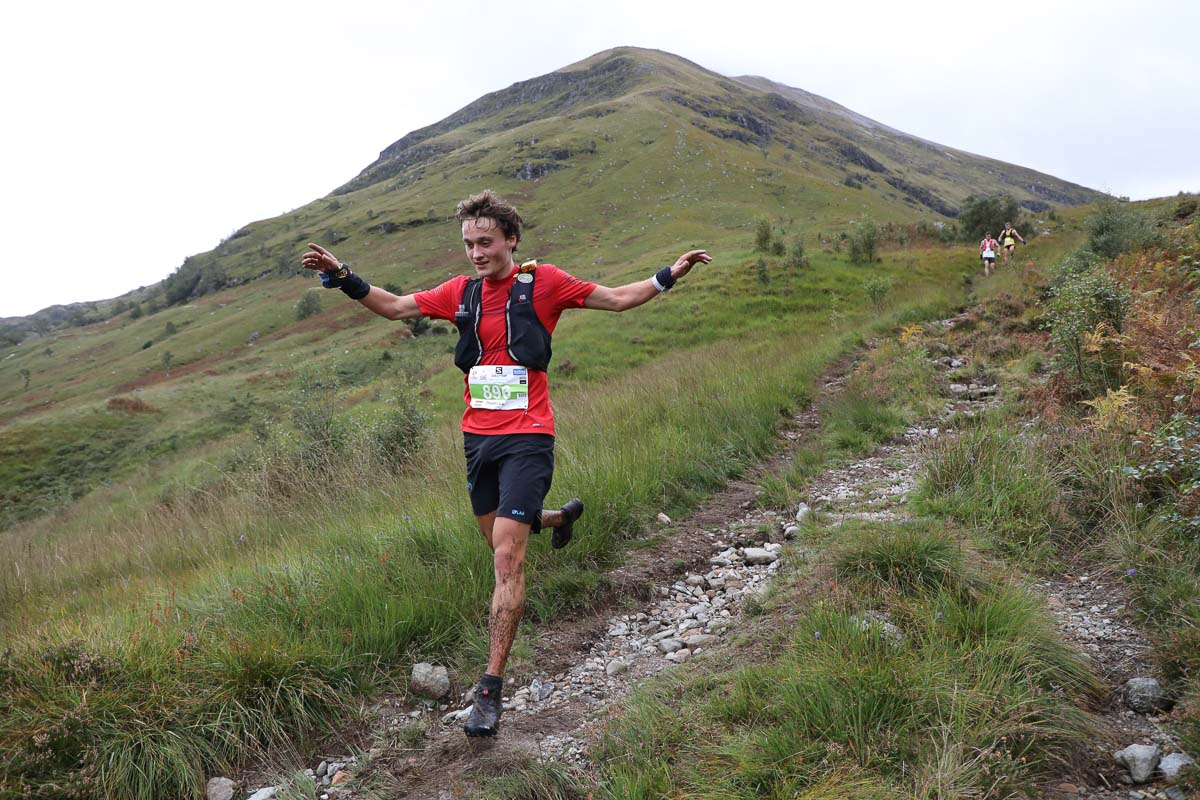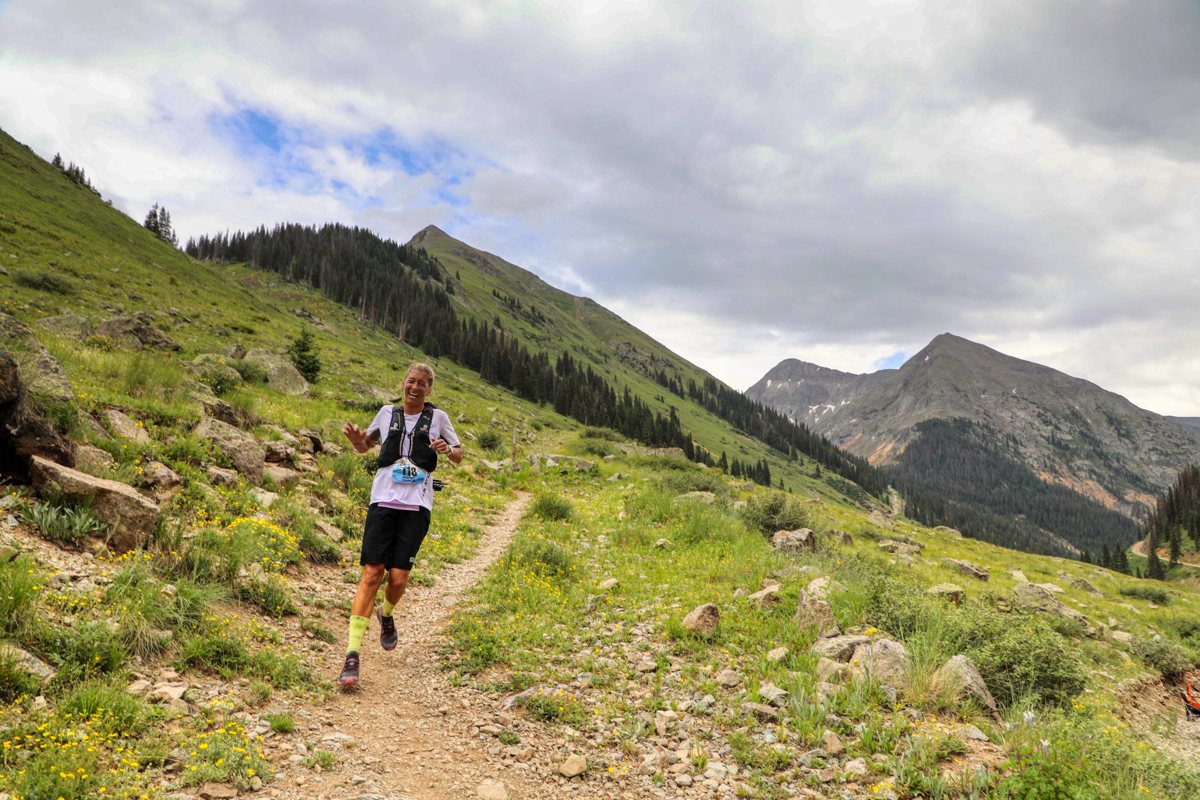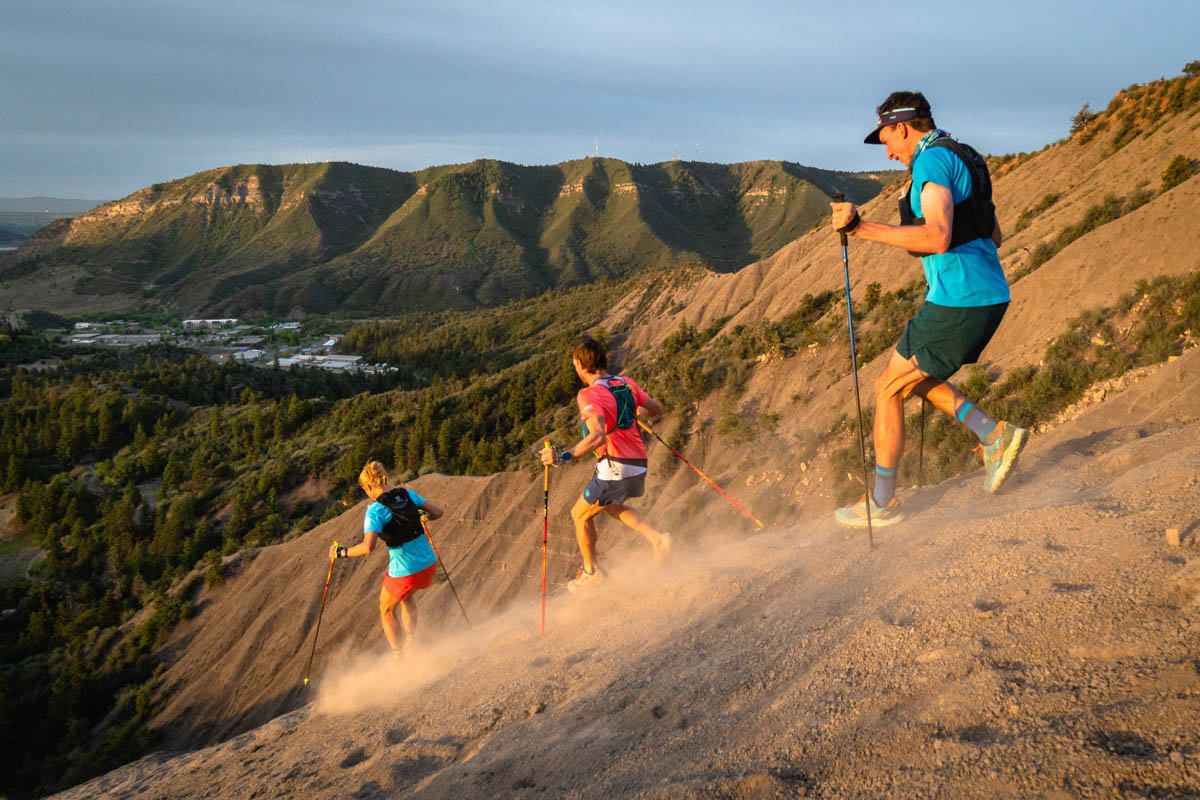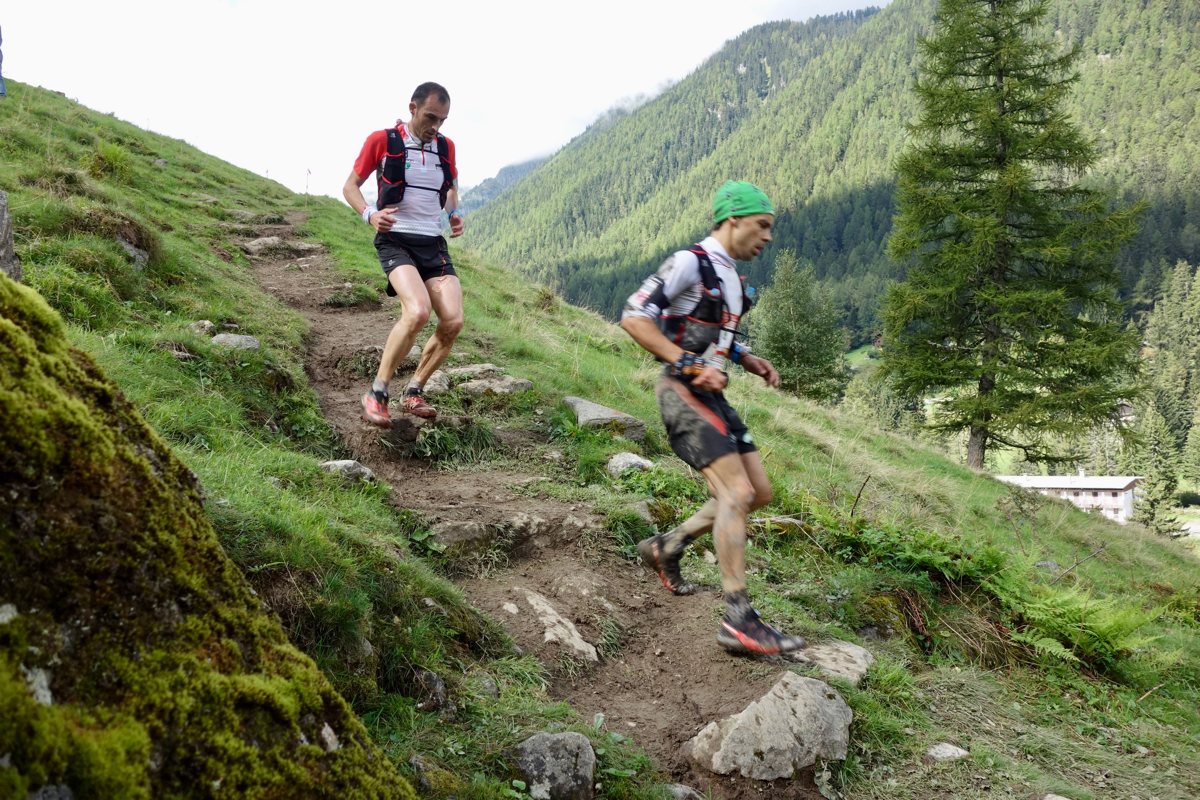This image below from Run100s.com (which we think first appeared in the November 1988 issue of “UltraRunning Magazine”) is one of my favorites because it demonstrates the ruggedness of several well-known North American 100-mile events as they existed at the time.
Each race has its own unique profile, but they all share a common theme: challenging topography. Though each race has numerous ascents, success will ultimately come to the best downhillers.

Let’s face it. Most ultrarunners accept the practice of hiking uphill; however, walking the downs isn’t a common or often recommended strategy. Downhill running is an eccentric-loading activity where the muscle is severely stressed during use due to the forces of deceleration, or braking, and impact absorption.
Trashed quadriceps lead to many ultra DNFs because the inevitable shuffling becomes too painful, frustration sets in, and cutoff times can’t be met. In order to minimize this damage, we have to harden our legs and low backs for all course-specific descents prior to race day. Strong ultra finishes hinge on our ability to move efficiently on all downhill slopes so that we make good time and, most importantly, enjoy our race experience.
Training for the Downhills, No Matter Where You Live
Ideal training grounds aren’t always easy to come by. The majority of the running population lives far from the mountains, or weather conditions (like mountain trails made inaccessible by snow and ice) may inhibit access for much of the training cycle.
How, then, do we prepare for big drops in elevation when adequate downhill running isn’t available? Here are three solutions, arranged according to preference, that mitigate this problem.
Specificity Rules
This isn’t a new concept. We all know that training repeatedly on the very hills you’ll see on race day is the best way to prepare. If your race venue isn’t within reasonable distance of your home, make it a point to attend training camps offered on the course or hold your own. The more time you spend on the course, the more prepared you’ll be for those descents and everything else come race day.
Note, added weight hastens quad damage. Wear all race-day equipment in training so your legs are used to the additional load.
Make Mountains Out of Molehills
If traveling to the course in advance isn’t feasible, make use of your immediate surroundings. Explore your local parks and open spaces. Find trails that have the longest, steepest descents. If the downhill segments are short, do repeats. If those don’t exist, be creative.
Venture off the beaten path to river and stream banks or to utility right-of-ways to discover slopes that might be just what you need. Ask other runners in your area where they do their hill training. No matter where you do it, every bit of downhill running logged before your event is advantageous.
Use What’s Available
They aren’t ideal, but man-made structures and machines make reasonable substitutions for prepping the legs for tough descents because they provide positive gains in lower body endurance and power.
- Treadmills – Many modern treadmills decline three-to-six percent. Sustained, steady running at these slopes will toughen the quads.
- Bridges and parking garages – Because these structures aren’t very high or continuous, you’ll need to perform several repeats in order to create a beneficial training stimulus.
- Stadiums and buildings – Most workouts focus on running up steps, but running down stairs will eccentrically load the quads as well as build strength and control in the hips. Stadium steps are the best as they are wider and allow for a more natural running gait. If you run down flights of stairs in a building, use the elevator to return to the top to limit recovery time and accumulate more downhill time in succession.
- Biking – The use of a bicycle or stationary model builds aerobic capacity and increases quad strength. Bike uphill or at high resistances to maximize leg development.
Other Ways to Train for the Downhills
Training for downhill running doesn’t stop here. In order to optimize performance over the descents and remain injury free, every runner should incorporate the following training modalities:
Strength Work
“Effective downhill running requires superior strength of the posterior chain (muscles of the backside of the body) and proper femoral control (the alignment of the femur in the hip),” says Dr. A.J. Gregg, a Certified Strength and Conditioning Specialist at HYPO2 High Performance Sports Center in Flagstaff, Arizona. “Running alone doesn’t do the best job at developing these qualities. Ancillary muscle activation and strengthening is more effective.”
Gregg encourages every runner, at a minimum, to have a basic prehab program that they perform regularly that focuses on strong glutes, calves, adductors, hamstrings, core, and balance. “For a beginner, coach Jay Johnson’s Pedestal and Myrtl routines are excellent places to start. The ultrarunner should master all of these activities.”
Once you’ve established your strength through the prehab exercises, you can progress to more complicated downhill-specific strengthening movements. Dr. Gregg suggests the following five key exercises:
- Slow eccentric lunges – Add weight (hand weights or medicine ball) after you master the movement.
- Quadruped eccentric quad strengthening
- Nordic hamstring curl – You can do this solo (as shown) or have a partner hold your feet.
- One-legged or two-legged box jump downs – With a small jump (not shown in video) upon landing.
- Drills that emphasize speed and deceleration – Focus is on form, keeping the feet under the hips, and the knees aligned with the feet (not bowed in or out).
Uphill Workouts
The focus of this piece is on increasing our downhill proficiency, however, we cannot overlook the importance of uphill running. Charging up a slope is a concentric movement — a deliberate and controlled action utilizing the calves, glutes, hamstrings, and quads, which are all the posterior chain muscles we discussed above. You are essentially doing hundreds of one-legged squats as you ascend.
Any short hill sprint or long ascent workout develops power and endurance, two necessary attributes when descending tricky slopes.
Proper Downhill Running Form
There is a certain finesse needed for downhill running. We aren’t 10 years old anymore, but we can certainly learn something by watching kids at play.
There is a correct and incorrect way to descend. Do it improperly and you’ll waste precious energy and become prone to knee, shin, back, hip, and ankle injuries. The steepness or length of slope is irrelevant; proper downhill running form remains the same. In the late stages of an event, focus on your technique as fatigue will further challenge your balance and coordination.
Here are some simple guidelines to keep in mind:
- Stay calm – Don’t force your stride. Keep your core tight, but legs, glutes, shoulders, and arms relaxed. Work within the parameters of your own range of motion and let gravity do the bulk of the work.
- Remain perpendicular to your running surface – Lift your knees up and down, not forward and out. Use your arms as balance as the slope increases.
- Do not overstride – This will cause braking, slowing your progress and placing undo stress on the knees and back.
- Keep your feet under your torso – Dr. Gregg suggests that you, “Visualize your feet landing behind you. This is impossible to do, but it’ll help you get your foot strike closer to your center of mass.”
- Increase your cadence – Imagine taking light, quick steps. As the slope increases, you’ll need to maintain a forefoot landing.
- Observe yourself – Have a friend take a video of you every once in a while so you’ll know what to change or improve.
Sharpening downhill running skills takes patience and diligence. You’ve now got the tools to help you unlock your potential.
Don’t settle for being a downhill survivor. Instead, institute these practices immediately and aggressively tackle the descents of your next ultra with the confidence of a downhill pro.
Call for Comments
- Have downhills been your downfall? If so, and after reading this article, what element(s) of downhilling technique and required strength are you lacking?
- Do you work on your downhill technique? While Ian gives great advice on how to train your downhill running and strengthen the muscles required for it, do you have additional ideas that have previously worked for you?
[Editor’s Note: As one of iRunFar’s best training articles, we’ve worked with author Ian Torrence to update this article before resharing it.]




